One heavily scarred individual at the same location as Simba CA, but 8 days later:
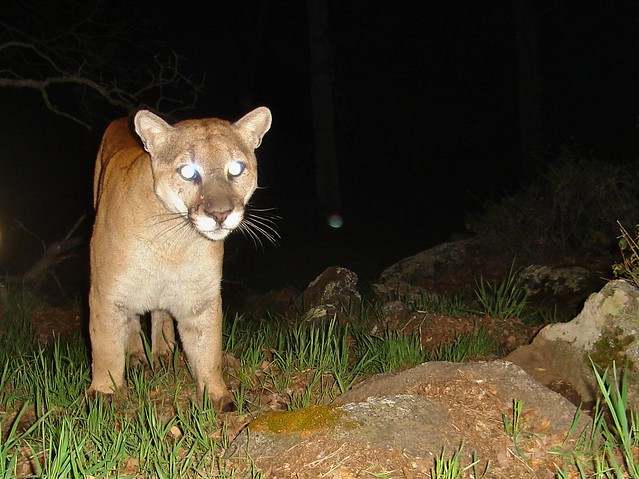

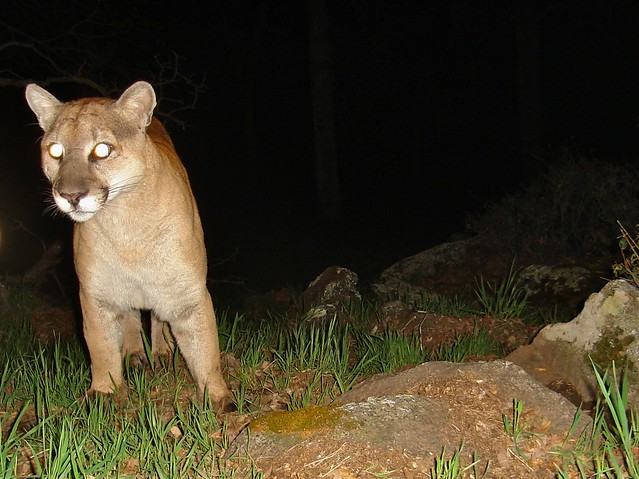
And another 1-2 individuals that did a few drive-bys at a nearby boulder-side cam - once with 3 photos by night 19 days after Simba, and once with 4 photos by day 2 more days after that:
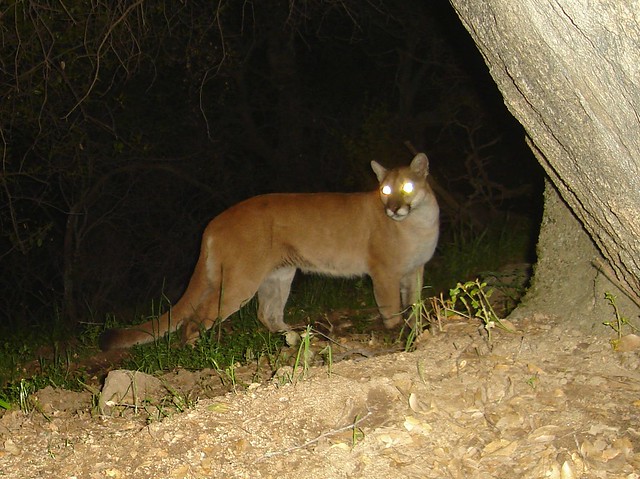
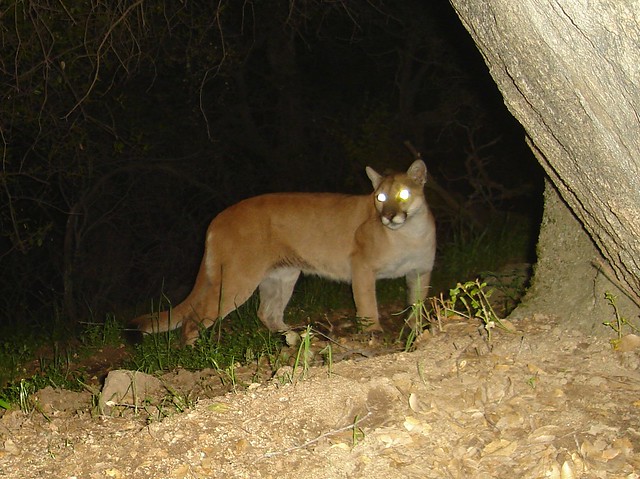
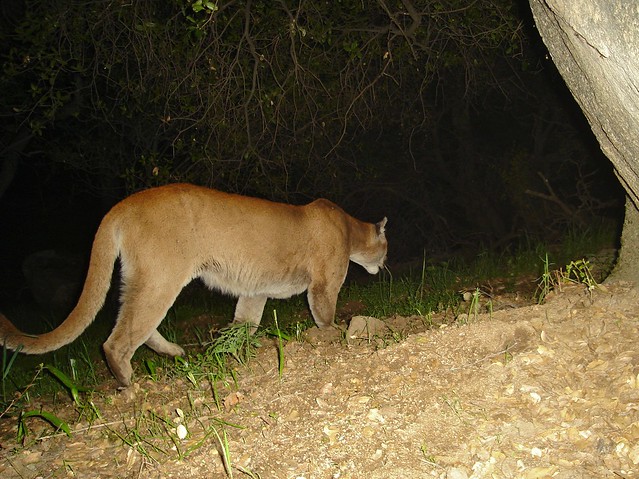
Note that the above lion has a similar gestalt to the scarred cat, but I can't see much in the way of scars in the high res versions of the photos to connect them.
In fact, the body shape seems to better match the wet kitty 2 days later that seemed to be looking for a place to get out of the rain, and perhaps paused for a spray:



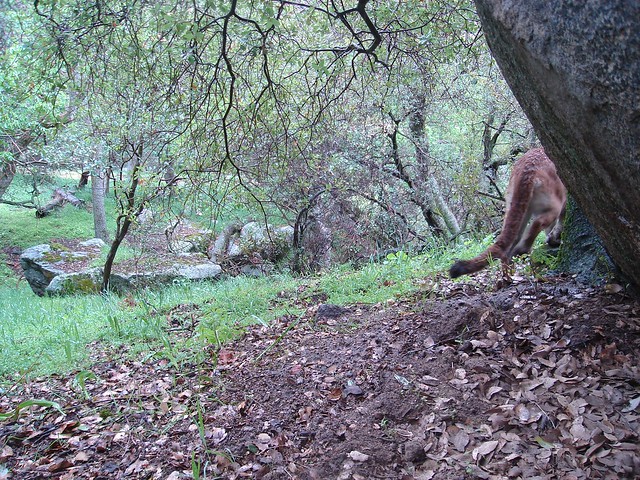
As for sex, the scars and shoulders on the first lion suggest territory-holding male, and the sleekness of the second/third maybe a younger lion and/or a female. But those profiles aren't perfect. And, if the second was the mom, you'd think cubs would be visible in a shot or two.
Appears the mystery of Simba's lineage will remain unsolved. For now.
====
References:
- Nature of a Man (this blog) - The Total Poser
- Nature of a Man (this blog) - posts on cam trapping the Tehachapis

Glad to see there is a healthy population out there! Incredible work, beautiful images.
ReplyDeleteIt always impresses me that the animals appear to be unfazed by the flash going off. The cat seems to take it for granted that there's something novel in the woods.
ReplyDeleteYes - across the species spectrum, the animals almost always act with either indifference or curiosity. I believe it's because they're used to such random stimuli (car lights, planes, etc.), and the flash doesn't include startling motion, which could trigger a fear/run response (and their eyes are especially tuned to). On the rare occasion I have seen fear responses, but always by species that are hunted in the area, such as deer and coyotes, thus making them skittish. And I believe the response is to the surprise sound of the camera waking up, more than the flash, since the flash usually catches them already moving away.
ReplyDeleteAlmost all the larger animals are curious and come to smell and often scent mark the cam. I have everything sniffing and rubbing on them, from foxes to coyotes to bears to cougars and bobs and woodrats and deer. I guess knowing every square inch of "your domain" is a must for survival.
I am completely delighted to have discovered your blog. Thanks for sharing. I am wondering if you would be interested in helping me identify some scat I keep finding around. I suspect it is feline of the Bobcat variety. If you do not feel up to it perhaps you could recommend a site? I have a snazzy picture.
ReplyDeleteThanks!
Welcome Kestrel. Checked your blog for the scat, but didn't see it. One of the easiest tells for cat scat, is that it generally doesn't look like canid scat, and is almost always covered - at least a little. I.e., if you're seeing these scats just out on the open trail, it's unlikely they're cat poops. Both bobcats and lions, much like housecats, like privacy, and will scratch up dirt and leaves and such afterward, to cover their leavings.
ReplyDeleteI appreciate your interest. I have not published the pictures. I wanted to identify them first. This is not as straight forward because it is not on a trail rather on my patio where I have seen bobcat hanging out before. This is the second time in a couple of weeks I have woke up to find a scat.
ReplyDeleteI just measured it, 5cm. Seems too small for bob...hmmm
ReplyDeleteI believe I figured it out. California toad. I have had one hanging around, my first ever great looks at one. And now I know what toad scat looks like. I appreciate you inadvertently inspiring me to figure it out. Sorry to load up your comments. (No pun intended I suddenly realized).
ReplyDelete